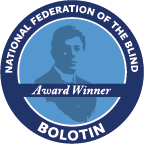MathCAT Navigation Commands and their Key Bindings
There are two modes, each of which can set:
- Speech after move mode: whether the expression is read or described (a summary/outline) after each move
- Navigation mode: navigate by subexpression, small piece, or character (shift+down/up arrow will cycle to smaller/larger modes and then wrap around).
See the Navigation Modes section after the table for explanations of these modes.
Note: while navigating an expression, “control+c” copies the math content of the current node in NVDA (as MathML, LaTeX, ASCIIMath, or Speech).
Navigation Commands Table
| Key | Unmodified | + Ctrl | + Shift | +Cntrl+Shift |
| Left | Move to previous |
In table: move to previous cell In columnar math: move to previous digit Note: Ctrl+Alt+Left can also be used |
Read previous | Describe previous |
| Right | Move to next |
In table: move to next cell In columnar math: move to next digit Note: Ctrl+Alt+Right can also be used |
Read next | Describe next |
| Up | Zoom out |
In table: move to cell above In columnar math: move to digit above Note: Ctrl+Alt+Up can also be used |
Change Navigation Mode (Enhanced/Simple/Character) to larger | Zoom out all the way |
| Down | Zoom in |
In table: move to cell below In columnar math: move to digit below Note: Ctrl+Alt+Down can also be used |
Change Navigation Mode (Enhanced/Simple/Character) to smaller | Zoom in all the way |
| Enter | Where am I | Global Where am I | ||
|
Numbers 1-10 (0 is 10) |
Jump to Place Marker | Set placemarker | Read Placemarker | Describe Placemarker |
| Space | Read current | Read Current cell | Toggle “speech mode” to read or describe | Describe current |
| Home | Move to start of expression | Move to start of line | Move to start of column Move to digit at top | NYI: Read from start of expression</span> |
| End | Move to end of expression | Move to end of line | Move to end of column Move to digit at bottom | NYI: Read to end of expression</span> |
| Backspace | Move back to last position |
|
NYI = Not Yet Implemented
Navigation Modes
| MathCAT supports three different navigation modes: enhanced, simple, and character. The first two modes of navigation follow the semantics of what was read for the entire expression except if LiteralSpeech is selected. For example $ | x+y | > 0$ will not read the vertical lines that are used for the absolute value notation, but instead will say “absolute value”. Zooming in will move directly saying “x plus y”. In contrast, character mode will read this as “vertical line”, “x”, “plus”, “y” “vertical line”, “is greater than”, “zero” as you move through the expression. |
- Enhanced mode: navigation is by mathematically meaningful pieces (operators, delimiters, and operands)
- Simple mode: this moves by words except when you get to a 2D notation (fractions, roots, …), then it speaks the entire notation. Zooming in lets you explore the 2D notation in the same mode. Zooming out or moving out of the 2D notation brings you back to the outer/higher level of navigation.
- Character mode: this is actually two useful modes – word mode and character mode (zoom in to get "real" character mode). Moves by words/characters. This differs for numbers of more than one digit and function names such as "sin" that are multiple characters. Otherwise, word and character navigation is the same. Both will automatically zoom into fractions, etc.
Typical Use
Typically, you will start at the first term of an expression and move right as needed.
You might move up and down levels if needed. This done with the arrow keys.
alt+ctrl+arrow is used to move around tabular entries.
Backspace will take you back to where you were, which is not always the same as moving to the left. For example, if right arrow moved you out of a fraction, backspace will take you back to where you were in the denominator and left arrow will land on the entire fraction.
You will likely find one mode of navigation the most natural for you most of the time.
This can be set in the MathCAT settings.
However, at any time during navigation, you can switch the navigation modes using shift+up/down arrow.
This is useful because each mode of navigation has its strengths and weaknesses.
Acknowledgements
A version of this document was produced as part of the ClearSpeak project. ClearSpeak was supported by the Institute of Education Sciences, U.S. Department of Education, through Grant R324A110355 to the Educational Testing Service.
